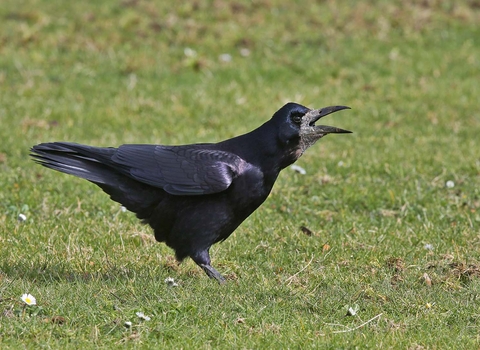
©Margaret Holland
Rook
The all-black rook is a sociable bird, so can be spotted in flocks or nesting colonies, known as 'rookeries'. Unlike the similar carrion crow, it has a grey bill and 'baggy trouser' feathers around its legs.
Scientific name
Corvus frugilegusWhen to see
January to DecemberSpecies information
Category
Statistics
Length: 45cmWingspan: 90cm
Weight: 310g
Average lifespan: 6 years
Common. Classified in the UK as Amber under the Birds of Conservation Concern 5: the Red List for Birds (2021).
